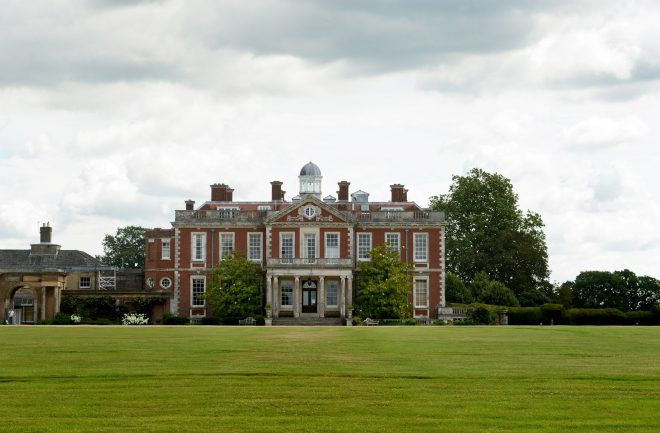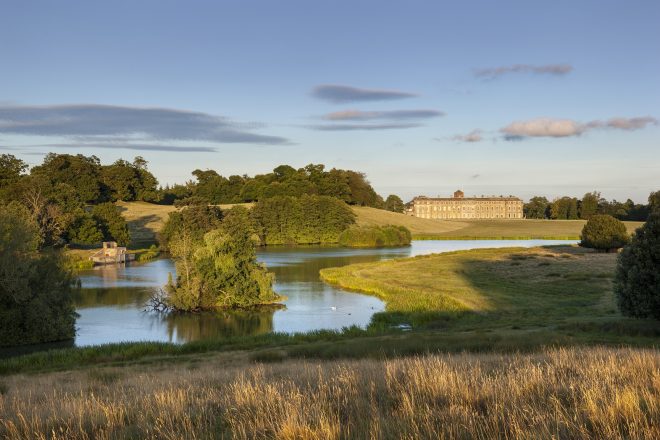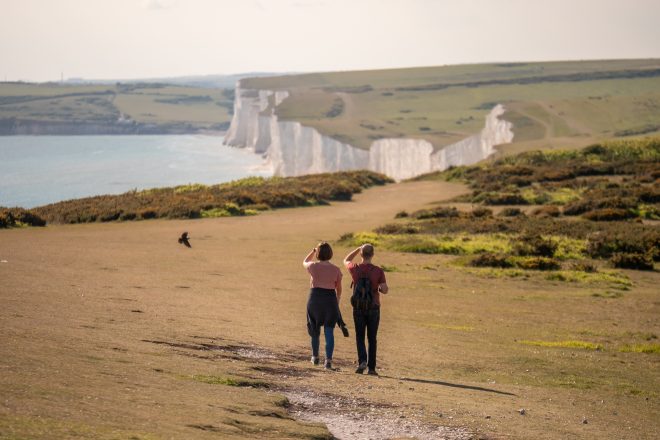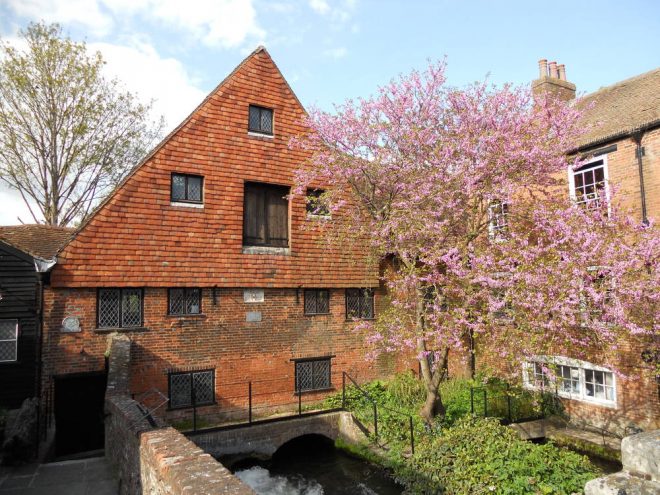Explore the South Downs National Park this September with Heritage Open Days
September 4, 2024

Whether it’s Iron Age forts, Norman castles, historic mills, Second World War defences, Viking burial mounds, or grand stately homes, the South Downs is a landscape oozing with history.
The incredible cultural heritage was one of the reasons for the designation of the National Park in 2010 and it’s the job of the National Park Authority to help conserve and enhance this heritage.
September is a good time to discover more about the heritage and culture of the South Downs as a number of venues open their doors for Heritage Open Days.
And the best part about it…it’s FREE!
The open days are part of a range of free experiences taking place across England and organised by thousands of volunteers.
 Anooshka Rawden, Cultural Heritage Lead for the National Park, said: “The South Downs has a wealth of cultural heritage and it’s wonderful to help share some of this through Heritage Open Days.
Anooshka Rawden, Cultural Heritage Lead for the National Park, said: “The South Downs has a wealth of cultural heritage and it’s wonderful to help share some of this through Heritage Open Days.
“This is your chance to see hidden places and try out new experiences, so do get out and make the most of it if you can!”
Some of the free open days and experiences between 6 and 15 September (please note some require pre-booking):
Arundel Museum, 14 September
Arundel Museum is open for free this Heritage Open Day on Saturday, 14 September This year marks 60 years since the Museum first opened underneath the Town Hall. Now, in the purpose-built Museum, enjoy seeing displays charting the history of Arundel. Find out more.
Fernhurst Fernace Open Weekend, 14 and 15 September
This Wealden Blast Furnace site has recently been conserved and there will be guided tours to explain what happened, when ship’s cannon were made here and why the conservation project was required. There are many other attractions including a demonstration of how to load and fire a musket as well as pole lathe wood turning, beam hewing from a round tree trunk, wool spinning and much more. Refreshment will be available which include tea and cakes, roast lamb and a veggie alternative all washed down with local beer. Find out more.
Guided tours of Petworth House, 14 and 15 September

Inspired by Baroque palaces of Europe, the 17th-century Petworth House displays one of the finest art collections in the care of the National Trust. See the state rooms featuring paintings and sculpture, including artwork by Van Dyck, Turner, Reynolds and Gainsborough.
Petworth House’s history has been created by one family over 900 years, with the collection highlighting a journey through history including the Gunpowder Plot and Napoleonic Wars. Collection highlights include the earliest English globe in existence, dating to 1592, and carvings by Grinling Gibbons.
The Servants’ Quarters, including the historic kitchens, show a glimpse into the life of the people who worked here.
Outside, the Pleasure Garden features formal borders, woodland walks, and architectural features, such as the Ionic Rotunda. The 700-acre Deer Park, which was transformed in the 1750s and early 1760s by the landscape architect Lancelot ‘Capability’ Brown, is home to ancient trees and fallow deer.
Coultershaw Heritage Site, Petworth 14 and 15 September
Come and marvel at the inspiring engineering of the historic beam pump, waterwheel and water fountain before admiring the 21st century state-of-the-art water turbine making renewable energy. If that wasn’t enough, families can embark upon a riverside adventure and explore the beautiful location alongside The River Rother by taking part in the Doris Duck Detective trail (£3).
Anne of Cleves House Museum, Lewes 13, 14 and 15 September

This stunning house was given to Anne of Cleves at the end of her short-lived marriage to Henry VIII – although she never lived there.
Explore well-preserved interiors including a Tudor kitchen, a light and airy parlour, and a beautiful bedroom complete with four poster bed.
Take advantage of the selection of dressing up clothes to find your inner King or Queen and bring the historic surroundings to life.
Learn about Sussex life through a fascinating collection of historic domestic artefacts. Then stroll through the garden, which is inspired by a traditional Tudor planting scheme and includes herbs, shrubs and fruit trees appropriate to the Tudor period. Learn more.
Overlooking the Long Man of Wilmington: Wilmington Priory, 7 and 8 September
Wilmington Priory began as an outpost of the Benedictine Abbey at Grestain in Normandy. Never a conventional priory with cloister and chapter, the monks prayed in the adjoining parish church where the thousand-year-old yews are testimony to the age of the site. The Priory has been added to and altered in every age and much of it is now a romantic ruin, but part of it became a farmhouse. This is a rare chance to stroll the ruins and see inside the Landmark Trust’s restoration of the farmhouse, now usually let for holidays.
Beachy Head Downland Trail: Victorian Rambles, 6, 8, 12 and 13 September

In 1849 the railways arrived in Eastbourne. This crucial new travel link established the town as the eastern gateway to the South Downs. Victorian tourists arrived in droves to experience the brilliant white chalk cliffs and stunning panoramic views offered by Beachy Head. Join a guided walk around ‘Victorian’ Beachy Head to discover what the area would have looked like towards the end of the 19th century and hear about some of the people we might have met wandering through the Downland.
Walk and Talk the Chalk – Seaford Head and Cuckmere Valley – 8 and 15 September
Join guide Helen Browning-Smith to take in the fascinating history, geology, flora and fauna of Seaford Head, Hope Gap and the Cuckmere Valley. The walk takes place on a site of breathtaking natural beauty and special scientific interest, all in view of the most iconic coastline in England -the magnificent Seven Sisters.
Coastguard Cottage, 7, 8, 14 and 15 September
Come and have a look inside one of the most famous cottages in England, meet a descendant of the last Coastguard, and see artwork inspired by this very special place.
Winchester Literary Tour, 6 and 7 September
Join Dr Gary Farnell (University of Winchester) for a walking tour of literary Winchester. Follow in the footsteps of writers with Winchester links, from Alfred the Great to Jane Austen, John Keats to Anthony Trollope, Thomas Hardy to Claire Fuller.
Winchester City Mill, 14 and 15 September

Winchester City Mill has stood at the heart of the historic city of Winchester, the capital of King Alfred’s Wessex, since at least Saxon times. With a history of over 1000 years, Winchester City Mill is one of the oldest watermills in the UK.
Inside, you’ll discover more about the mill’s long and fascinating history. Learn how the venues intends to return to milling traditional stoneground wholemeal flour using the power of the River Itchen and have a short guided tour by one of our wonderful guides (subject to availability).
The City Mill is home to a wide variety of wildlife including kingfishers, grey wagtails, wild trout and water voles, which can be spotted from our tranquil island garden.
Researching Early Black History – A talk in Winchester by Cheryl Butler, 15 September
The talk will look at the challenges in researching early black history and examine in detail three cases studies: Zoe Loanda, and a ship rescue; Jacque Francis, a 16th century diver and Black John, a 15th century carpenter.
The Battle of Waterloo and The Ponsonby Family, Stansted House – 9 September
On 18 June 1815, the war that had raged across Europe for 23 years concluded with the Battle of Waterloo. On the battlefield, cousins Sir Frederick Ponsonby and Sir William Ponsonby fought bravely against Napoleon’s army. By the end of the battle, one cousin had been killed whilst the other miraculously survived.
During this special tour of the Ponsonby Room at Stansted House, you will discover the impact the Battle of Waterloo had on the Ponsonby family and see items belonging to the family, including Sir William Ponsonby’s sword.
